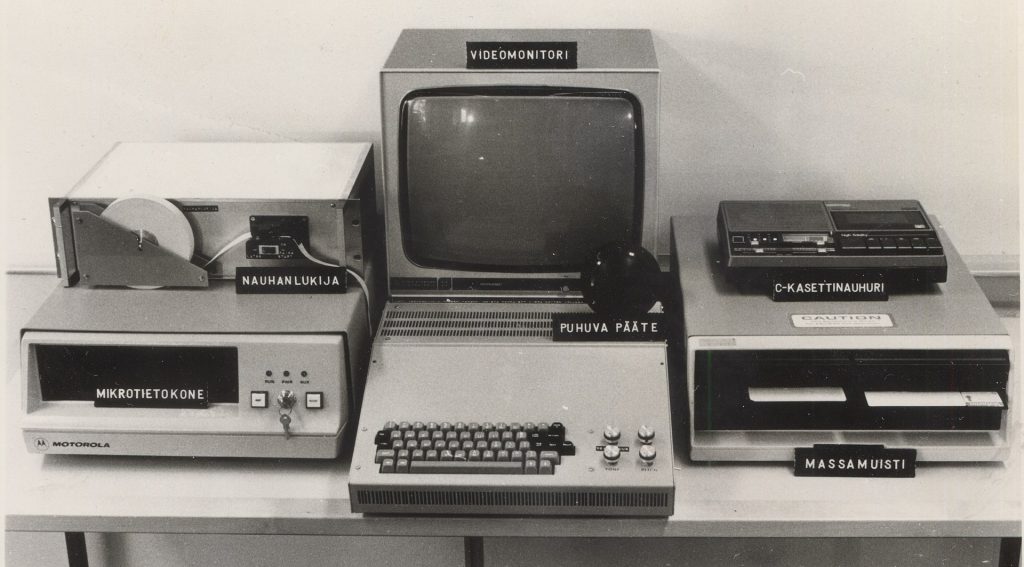
Assistive technology to provide spoken information to the blind existed in 1979, as this picture from Turkey shows. The WeWALK smart cane incorporates all of this into a compact device at the end of a cane.
“In these days, we are talking about flying cars, but [blind] people have been using just a plain stick,” says Kursat Ceylan, a visually impaired engineer from Turkey and founder of the Young Guru Academy. Yet, according to the World Health Organization, there are some 250 million blind or visually impaired people in the world. Some 50 million of them use a cane. The traditional cane has served blind people extremely well, enabling them to detect changing textures on the ground. But what about chest-height obstacles? Here’s where the WeWALK smart cane comes in. “WeWALK solves this problem and adds more to it through smartphone integration,” says the company’s website.
WeWALK is equipped with built-in speakers, along with a voice assistant, Google Maps, and special sensors. These emit vibrations warning the user about obstacles above chest level. The cane connects to the WeWALK app, available from the App Store and Google Play for iOS and Android smartphones. Continues Kursat, “As a blind person, when I am at the Metro station, I don’t know which is my exit… I don’t know which bus is approaching… which stores are around me. That kind of information can be provided with the WeWalk,”
This is the fourth article of our series on smart AT devices that help the blind and visually impaired. Previously, we featured OrCam MyEye, which consists of a camera clipped on a pair of glasses that instantly and discreetly reads printed and digital text aloud—from any surface, printed and digital alike—and recognizes faces, products, and money notes, all in real time. Another device that uses a camera clipped to a pair of glasses is Aira. The camera and a transmitter feed feed a live stream to remote agents connected with a single tap on the app; these agents provide detailed narrations of what’s around them. And there is Microsoft Seeing AI, a free app for iOS that combines artificial intelligence and the iPhone’s camera to describe people, text, and objects.


